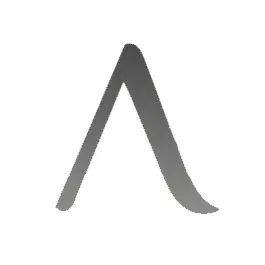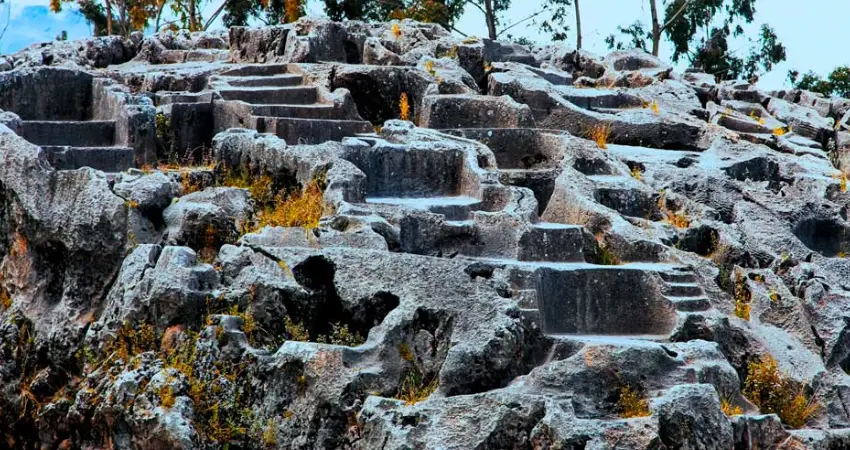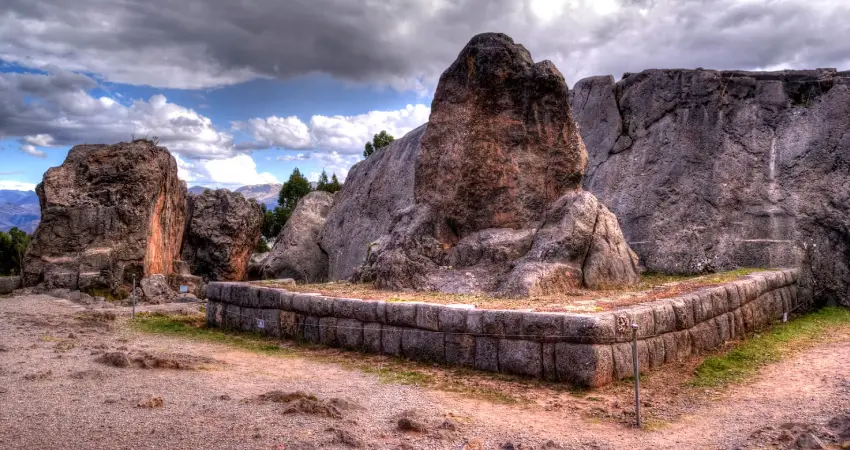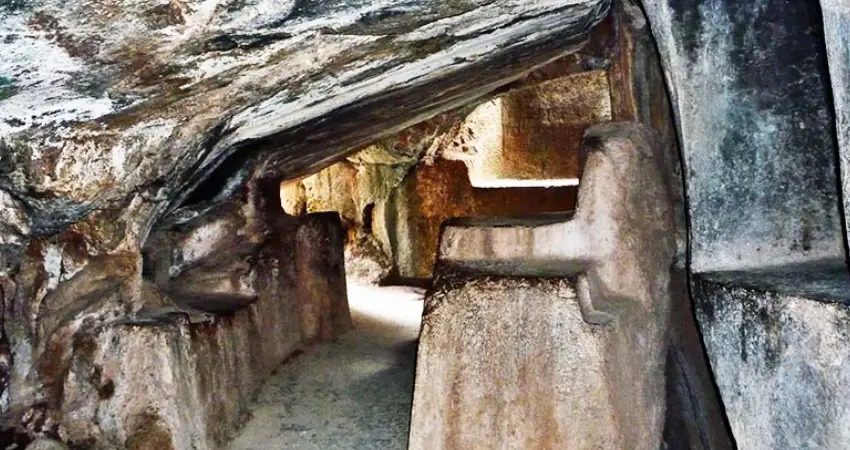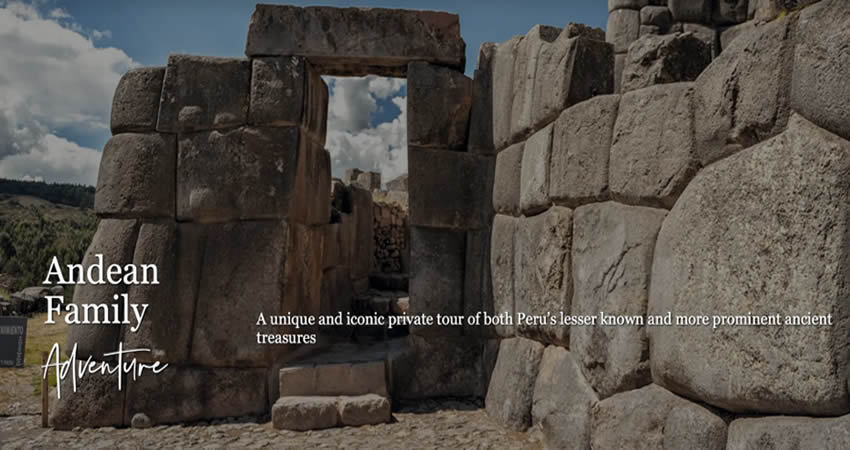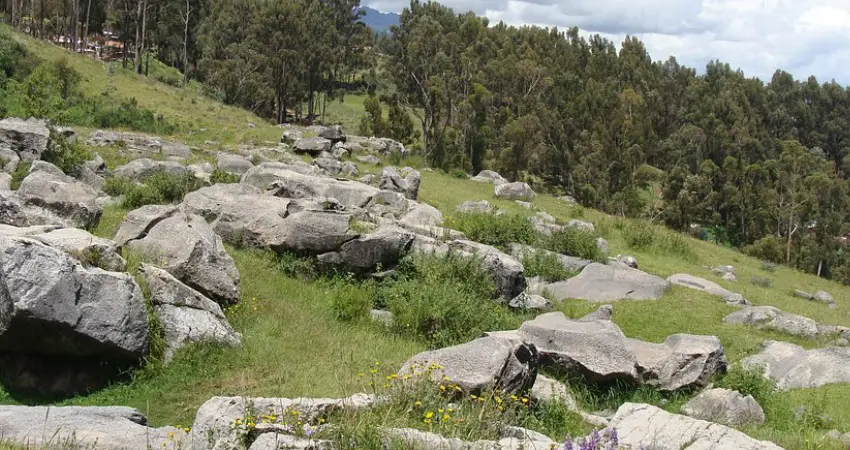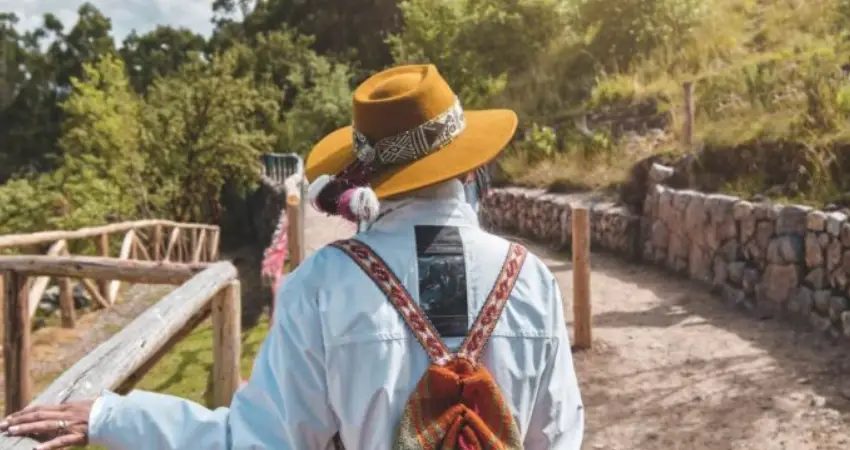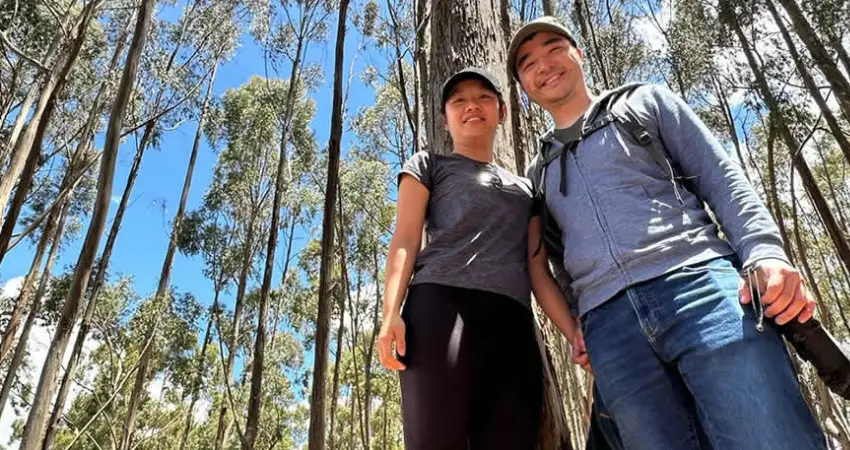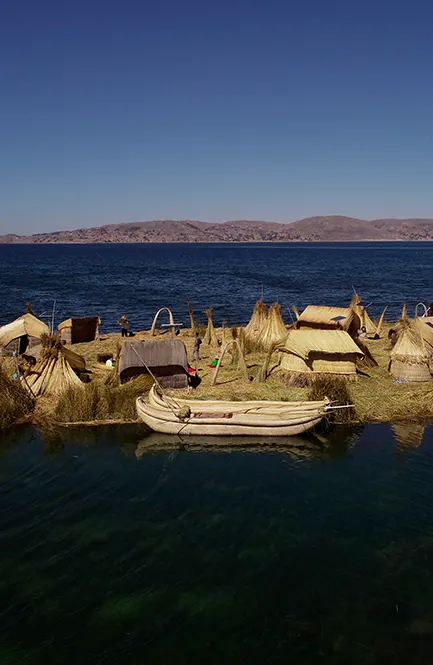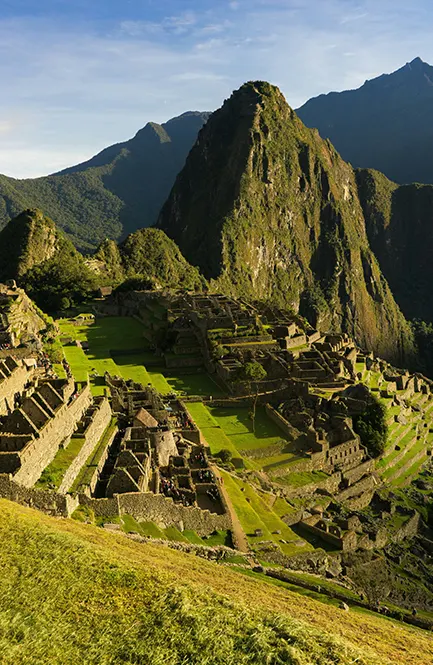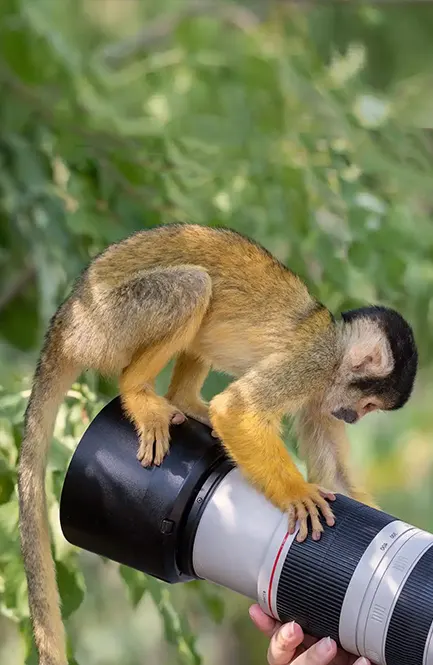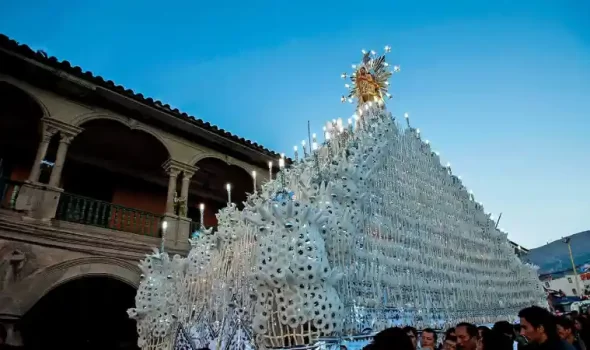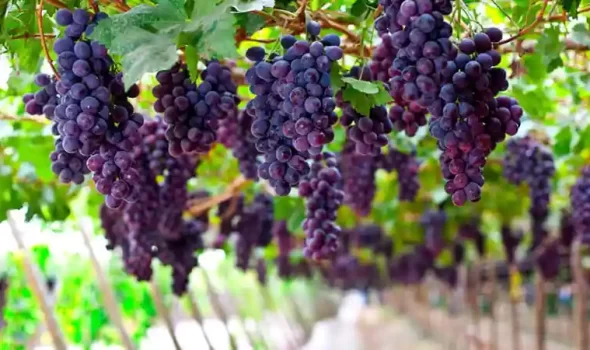1.- HISTORICAL SIGNIFICANCE AND OVERVIEW
The archaeological center of Qenqo Cusco Peru is considered one of the most emblematic places of the city that was once considered the capital of the ancient Inca culture, located northeast of the city of Cusco is this mysterious and enigmatic place that to this day is investigated about its purpose and importance. The name Qenqo Cusco Peru is connected and linked directly with the context of labyrinth or zigzagging due to the unique structures that can be found inside and that are linked to ceremonies and religious rites of the Inca culture.
2.- Origins and meaning of Qenqo Cusco Peru
Many of the places found in Cusco and its surroundings get their name as derivatives of Quechua words, this also happens with Qenqo Cusco Peru. The actual Quechua term is:
Kinq’u: referring directly to something twisted, zigzag or curved.
This is due to the characteristics that the place possesses in addition to the fact that in the walls of Qenqo Cusco Peru you can find intricate lithic engravings that have geometric patterns in addition to a set of passages that simulate a labyrinth. Many historians and specialists consider that Qenqo Cusco Peru was a center of rituals with great importance for the Inca culture, especially those related to the sun and funerary activities.
The archaeological center of Qenqo Cusco Peru is located in the upper part of the city, 4 km away at 3580 meters above sea level. It has easy access and has panoramic views of the city in addition to the connection that exists with the sacred valley.
At first glance you can see that Qenqo Peru Cusco is divided into several sectors and has several structures having among the most prominent the semicircular amphitheater, an altar that was carved into rock and the set of subway passages which are believed were intended for religious ceremonies and funeral processes. Undoubtedly one of the aspects that also highlights Qenqo Cusco Peru are the set of works carved into the rocks that adorn each of the walls of the enclosure and between the reliefs is possible to see geometric and zoomorphic forms so it is understood that also performed astronomical rituals and worship of Pachamama which was considered the mother earth, As for the carved altar, it is possible that it served as a place where sacrifices and offerings were made for the deities that was connected to the carved channel where ceremonial liquids such as chicha or animal blood could be seen.
3.- A JOURNEY TO THE WORLD BEYOND THIS ONE
“For the Inca culture the belief in death was something ephemeral, they believed that when a person died they only passed to the next life for this reason it was very important that their earthly body was cared for in the right way. It is believed that Qenqo Cusco Peru was the place where the body was prepared in order to turn it into a mummy, which in the Andean culture is known as Mallqui.”
4.- Function of Qenqo Cusco Peru during the Inca period
It is believed that Qenqo Cusco Peru was not only a ceremonial place, in fact it also had an important role in political and social aspects for which its location and purpose is related to sacrificial rituals which were destined to be performed during the most important festivities dedicated to the gods such as the sun and the moon. Andean priests also used the archaeological center of Qenqo Peru Cusco as a place to worship other deities and have a closer connection with the Andean cosmovision to reach purification and connection with the spiritual world. It is also believed that Qenqo Cusco Peru was a funeral center where the bodies were processed and prepared to be later turned into mummies or mallquis, in this way they would have continued to be venerated as they were in life.
There are also those who say that Qenqo Cusco Peru had an astronomical role since many of its structures are aligned with the movements of the sun and stars which has made the Andean priests could determine important times of the year making these the beginning and end times in terms of planting and harvesting as well as relate them to cultural festivals such as solstices thus creating important events that remain for generations to this day, as the Inti Raymi.
5.- ARCHITECTURAL MARVELS OF QENQO
Inside the archaeological center of Qenqo Cusco Peru there are two main areas: Great Qenqo and Small Qenqo. Each of these areas has different functions and characteristics that denote the variety, diversity and at the same time complexity that contained the imposing Inca architecture.
5.1.- Great Qenqo
Considered as the largest and broadest sector of the entire archaeological center, it is the sector of Qenqo Cusco Peru which contains the largest number of structures as well as various representative elements of the Inca culture. Characterized mainly by containing complexes at various levels and contains a set of enclosures and passageways that were created for ceremonial purposes.
5.2.- Main Altar and Carved Rock
In the center of the great Qenqo sector is located a large carved rock in which it is assumed that rituals such as sacrifices and offerings were performed in a religious sense. All this sector contains an elevated altar that is surrounded by various channels that have been carved into the rock and probably were used to channel liquids for ceremonial purposes among these is the blood or chicha, it is believed that this was one of the most important points within the entire archaeological center as it is also associated with the worship of the sun and other divinities of Andean belief.
5.3.- Labyrinth and subway passage
Also part of this sector are the complex passages that were elaborated subway and give the sensation to any traveler to be entering a labyrinth, its walls have been decorated with engravings and figures with geometric shapes which are believed to have had the purpose of a main center for activities such as rituals or ceremonies. Another form of interpretation mentions that the passages are a symbol of connection between the earthly and spiritual worlds.
5.4.- Amphitheater
It is the most mysterious part of the archaeological center since it has a circular structure which indicates that it was mainly used to elaborate public ceremonies in which different people participated. Of course, its real purpose is still under investigation, many researchers have mentioned that it was a place of celebration and political assemblies since it was the point where they could pay homage to the ideals as well as to the ancestors.
5.5.- Temple of the sun and sacred stone
We can also find an enclosure that was probably dedicated to the sun since it is estimated that many of the predictions that were made by the Andean priests were thanks to the projections of shadows in addition to other astronomical interpretations that were always related to the sun. The sacred stone was mainly used to align astronomical events such as solstices or equinoxes, which makes a clear reference to the advanced level of sophistication that these Andean priests had about the cosmic cycles of the sky.
5.6.- Small Qenqo
Unlike the other area, this sector is smaller in terms of dimensions as well as being compact and less elaborate, however it still maintains a point of archaeological interest as it is located near a hill and contains smaller enclosures with passageways and areas that were probably dedicated mainly to the complementary activities that were carried out in the other sector. It is known so far that the main function of this place within the archaeological center of Qenqo Cusco Peru was mainly as a storage point where they kept the objects that were used in rituals and offerings and also have been found small altars where they could use other transitory offerings or less important.
6.- HOW TO GET TO QENQO CUSCO PERU
Getting to this sector is quite simple since it is one of the archaeological centers that is closer to the city of Cusco.
- The first option is to visit us during a guided tour, the experience is the City Tour that first allows you to know the main points of the city and then the set of archaeological centers that are located in the upper part of the city, among them is Qenqo Cusco Peru, usually the visit time is between 20 to 30 minutes, it is usually the most recommended experience because it is more complete and includes all the necessary aspects such as income, transportation and others.
- The second alternative is to do it on your own, for this you can rent a transport through the InDriver application or hire it directly with your travel agency, from the main square to this place it takes 15 minutes to travel. Upon arrival you pass a checkpoint where you must pay the entrance ticket and then you can enjoy on your own all the archaeological center of Qenqo Cusco Peru in a free way.
| Hours of operation | |
| Monday to Sunday | From 08:30 am to 17:30 pm |
| Entrance ticket price | |
| Foreign adult | s/ 70.00 soles (Partial Tourist Ticket) |
| National adult | s/ 40.00 soles (Partial Tourist Ticket) |
Important: This ticket also allows you to visit Saqsayhuaman, Puca Pucara and Tambomachay.
| “Once a year, go somewhere you’ve never been before.” |
7.- FREQUENTLY ASKED QUESTION
- What is the best time of day to visit Qenqo in Cusco?
The best times of the day to visit Qenqo Peru Cusco are between 11 am and 15.00pm in the afternoon, that is because it is the ideal time to appreciate how thanks to the position of the sun you can enjoy the projection of shadows.
- How long does it take to explore Qenqo archaeological site?
The visit can last between 30 minutes to an hour depending on the information that your professional tour guide can give you.
- Can you visit Qenqo and Sacsayhuaman on the same day?
Yes, both archaeological sites are part of the City Tour and can be visited on the same day.
- What makes Qenqo different from other Inca sites near Cusco?
Essentially by the structure of its constructions is known that the purpose of Qenqo Peru Cusco was different from the rest of archaeological center also has the particularity of containing one of the cooler environments than other places so its funeral purpose was essential and very important.
- Is it worth hiring a guide for Qenqo, or can you explore it alone?
You have both options, no doubt hiring a guide is always the best alternative as it is not only a person who knows the history in fact is an interpreter of the culture and every step you are with him may be a moment of learning more about the culture and history that contains not only Qenqo Peru Cusco but the whole environment.
During your next trip in 2025 you can not miss the opportunity to enter the passages of Qenqo Cusco Peru to learn more about its mysteries, Auri Peru designs responsible and purposeful experiences looking for your adventure to be an immersion in culture, history and tradition that for generations has remained latent. Contact us now and let us design the best travel experience of your life.
“The world is a book, and those who do not travel read only one page.”
